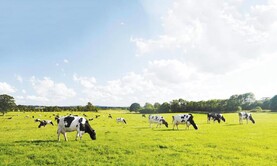It has been a busy few weeks here on the farm and fatigue is well and truly setting in.
After late nights and early mornings with 70 sheep lambing a day at the peak, I am glad we are now nearing the end. A couple of good nights’ sleep will be most welcome.
The decision I took last autumn not to breed the ewe lambs is something I have battled with the merits of over the winter months.
From a financial point of view, they will be on the farm for another year before they start to contribute their first crop of lambs, but on the labour side of things, they have been a lot easier to manage as maintenance feeding was sufficient.
There is also the fact that I would now be facing into lambing them down alongside the remaining repeats that are left from the mature ewes at a time when I am exhausted already.
As it stands, the remaining ewes to lamb are being let out to a paddock beside the yard during the day and returned to the shed in the evening to make night checks easier.
The real test to see if this has been a success, I suppose, is when I see how they get on lambing next year.
There will be three large groups of mature ewes and one small group of repeat ewes
Drew and Mia have begun to play their part in assisting on the farm. They now notice if the sheep have rolled on to their backs or are about to lamb. There is a flurry of activity when they spot something out of place. They were totally besotted with the pet lambs and have really enjoyed feeding the weaker ones.
Hopefully this enthusiasm for farm work will continue as they get older.
The mature ewes will be grouped into their respective grazing mobs for the coming year by the end of this week.
There will be three large groups of mature ewes and one small group of repeat ewes.
The main limiting factor for group size here on the farm is determined by how many I can put through the yard in a given day for treatments, while still allowing time for me to do other tasks around the farm on the same day.
These larger groups are also beneficial to utilising and producing more grass on the farm as they have a shorter residency period in each field before moving to the next paddock, which allows for more grazings per field in the year.
Clean-up mob
As the ewe lambs were run dry this year, they will act as a clean-up mob moving around the farm to clean out fields to the desired residuals without putting too much pressure on the lactating ewes to do so.
Unlike last year, there is no deficit in grass supply on the farm. I plan to get back out measuring grass from this week.
With what appears to be an abundance of grass on the farm, I will probably close off a few fields for silage that have been grazed out at this stage. The fields that had the redstart in last autumn for winter grazing have developed a nice cover of weeds, which will be treated prior to reseeding in April.






 This is a subscriber-only article
This is a subscriber-only article









SHARING OPTIONS: